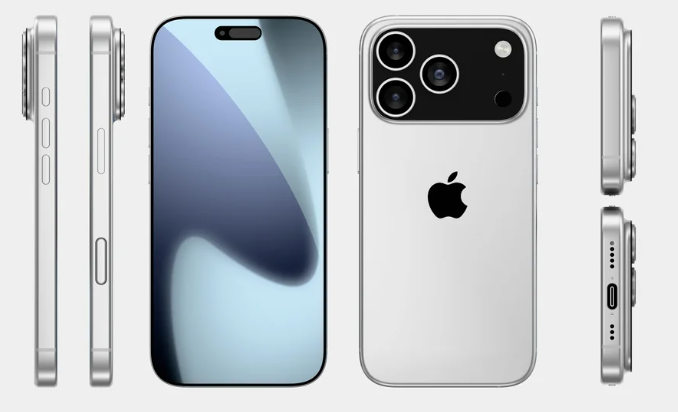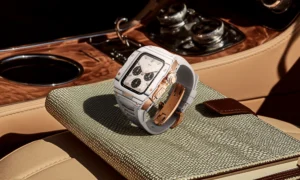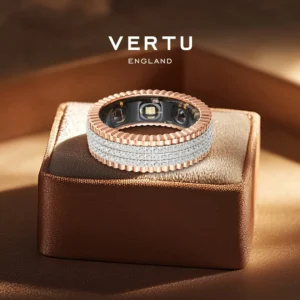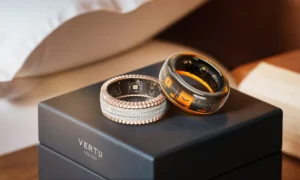Key Takeaways
- iPhone 17 Camera Design: The iPhone 17 introduces a “Sensor Bar” design, moving away from the square module to a sleek, vertical array. This houses a larger primary sensor and a new periscope telephoto lens, emphasizing a fusion of minimalist aesthetics with significant performance upgrades.
- Vertu's Diverse Aesthetics: In stark contrast, Vertu offers a portfolio of unique camera designs across its models (Aster P, Metavertu, QuantumFlip, iVertu). This approach champions aesthetic diversity and rejects a one-size-fits-all style, ensuring each device is a unique statement.
- Two Competing Philosophies: Apple's camera design evolution is driven by relentless spec upgrades within a consistent minimalist framework. Vertu's philosophy prioritizes design as a form of self-expression, where the camera's look is as important as its function, often featuring the brand's iconic “V symbol.”
- “Just Different” – A Market for Individuality: The comparison highlights that the market is not monolithic. While Apple satisfies the demand for a universally excellent and familiar tool, Vertu, with its slogan “Just Different,” caters to a discerning clientele that values uniqueness, craftsmanship, and a bold brand identity.
How Do You Review the Camera Design of the iPhone 17: A New Look for a Familiar Powerhouse?
With every new iPhone launch, the camera module is the most scrutinized design element. It’s the lens through which we capture our lives, and its appearance defines the device's identity. Now, with the iPhone 17 in our hands, the crucial question is, “How do you review the camera design of the iPhone 17?” It's not just about megapixels and zoom capabilities; it's about the aesthetic choices Apple has made. To truly understand its new design, we must place it in conversation with a brand that treats camera design not as a uniform, but as a bespoke suit: Vertu.
What’s New with the iPhone 17’s Camera Appearance and Performance?
Apple has officially retired the iconic square “stovetop” module. The iPhone 17 introduces a refined, vertical “Sensor Bar.” This sleek, pill-shaped housing is less obtrusive and creates a more balanced look on the device's back. Aesthetically, it’s a nod to classic camera design, signaling a more serious photographic intent. Functionally, this new shape accommodates a significantly larger main sensor for improved low-light performance and, for the first time, a folded periscope telephoto lens, enabling unprecedented optical zoom. It’s a design born from engineering necessity, polished with Apple's signature minimalism.
The Vertu Approach: Rejecting the Monotony of Uniformity
While Apple perfects a single design for all its users, Vertu celebrates diversity. A core part of their philosophy is ensuring aesthetic choice and rejecting boredom. Each Vertu line presents a distinct camera identity:
- Aster P: Features a classic, centrally-aligned circular camera module, exuding a timeless, watch-like elegance.
- Metavertu: Boasts a bold, futuristic rectangular array that emphasizes its cutting-edge Web3 technology.
- QuantumFlip: As a foldable, it integrates its cameras into a sleek external bar, a marvel of functional design.
- iVertu: Presents a clean, modern look with individually accented lenses that stand apart.
This isn't random; it's a deliberate strategy to offer different personalities for different users. At the heart of it all, the iconic Vertu “V symbol” is often subtly integrated near the camera, a constant reminder of the brand's unapologetic identity and commitment to handcrafted excellence.
Apple's Philosophy: Is It Just About Upgrading the Specs?
To be fair, Apple’s design consistency is a masterclass in branding. The recognizable iPhone camera layout has become a status symbol in itself. Their design philosophy appears to be: maintain a familiar, minimalist aesthetic while pushing the boundaries of performance underneath. The evolution from a single lens to the new Sensor Bar has been a slow, deliberate march dictated by technological advancement. This approach has created the world's most popular camera. It doesn't explore different design languages because it has already established the language. It isn’t a debate about right or wrong, but an observation of a focused, minimalist vision.
A Tale of Two Design Philosophies: Function vs. Form as Identity
This brings us to the core of the discussion. The iPhone 17 and Vertu represent two fundamentally different beliefs about what a camera's design should achieve.
- Commercial Photography Scenario: A marketing professional uses the iPhone 17 to capture product shots for social media. The camera's reliable performance and the phone's unobtrusive design make it the perfect tool for the job. It's efficient, powerful, and gets out of the way, letting the subject be the hero.
- Exclusive Event Scenario: An art collector attends a gallery opening. They use their Vertu Aster P to take a photo. The act of using the phone—with its unique design and tactile feel—is part of the experience. The camera is not just a tool; it's an accessory that complements the high-fashion, art-centric environment.
Core Philosophy Comparison: The Universal Tool vs. The Personal Statement
| Attribute | iPhone 17 Camera | Vertu Camera Collection (Aster P, Metavertu etc.) |
| Design Approach | Singular, minimalist “Sensor Bar” across the line. | Diverse, unique designs for each model line. |
| Aesthetic Goal | Universal, functional, and instantly recognizable. | Bespoke, expressive, and individually styled. |
| Driving Force | Driven by performance upgrades and engineering needs. | Driven by aesthetic vision and customer personality. |
| Brand Integration | Subtle Apple logo on the phone's back. | Prominent use of the “V symbol” as a design element. |
| Core Philosophy | One perfect design for everyone. | A perfect design for each individual. |
| Implied Statement | “I have the latest and best technology.” | “I have a unique piece of craftsmanship.” |
“Just Different”: A Slogan for a Different Set of Needs
Vertu's slogan, “Just Different,” perfectly encapsulates this entire debate. It’s a powerful acknowledgment that a significant segment of the market craves more than just incremental spec bumps packaged in a familiar design. They seek emotion, personality, and a sense of exclusivity in their devices. The iPhone 17 and a Vertu are not truly competitors; they are solutions for two entirely different human needs. One satisfies our need for the best possible tool. The other satisfies our desire for a unique identity.
Recommended Users: Which Camera Philosophy Suits You?
- The iPhone 17 is for you if: You are a content creator, a parent, a tech enthusiast, or anyone who demands the highest level of camera performance in a simple, reliable, and beautifully designed package. You want your photos and videos to be flawless, and you trust Apple's vision to deliver that.
- A Vertu is for you if: You are a design aficionado, a business leader, or an individualist who believes the tools you use should be as unique as you are. You appreciate a brand that offers aesthetic choice and see your phone's camera as a design statement, not just a technical component.
Frequently Asked Questions (FAQ)
Q1: Is the iPhone 17's new “Sensor Bar” design purely aesthetic?
- No, it's primarily functional. The vertical layout was necessary to house the new, larger main sensor and the complex prism system of the new periscope telephoto lens. The minimalist look is Apple's way of elegantly packaging that new technology.
Q2: Does Vertu's focus on design mean its cameras are not high quality?
- Not at all. Vertu uses high-quality sensors and lenses, often protected by incredibly durable sapphire crystal. While they may not always chase the absolute highest megapixel count, their cameras are tuned for excellent real-world performance, with a focus on color accuracy and clarity.
Q3: Why doesn't Apple offer different camera designs on different models?
- Apple's brand identity is built on consistency and simplicity. Offering varied designs would dilute the iconic look of the iPhone. Their differentiation occurs through features (e.g., Pro vs. standard models) rather than wholesale aesthetic changes.
Q4: Is the “V symbol” on Vertu phones just a logo?
- It's much more than a logo. It is often a three-dimensional, physical part of the phone's construction, integrated into the chassis or earpiece. It’s a hallmark of the brand's commitment to building a device with a strong, tangible identity.







